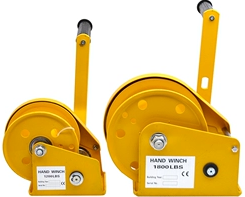Hand winches are versatile tools that can be used standalone or integrated with various equipment, such as vehicle-mounted cranes, mobile cranes, or outdoor hoisting machines. During heavy lifting operations, the hand winch’s internal bidirectional self-locking mechanism provides critical safety protection. When rotation stops, the system locks promptly, keeping the load stationary and preventing dangerous rapid descents. But how exactly does the bidirectional self-locking mechanism work?

How the Bidirectional Self-Locking Mechanism Functions
When the operator turns the handle clockwise, the internal ratchet rotates in the same direction. Once the handle stops, the ratchet and pawl interact to create a self-locking effect, halting movement. The same principle applies when the handle is turned counterclockwise. This ratchet mechanism prevents reverse rotation, ensuring the load remains stationary. However, self-locking often produces noise and vibration, which can cause wear on the ratchet and pawl components. As a result, the frequency of self-locking should be kept moderate to minimize wear.
Benefits of the Mechanism
The bidirectional self-locking principle ensures smooth and safe lifting operations, offering significant convenience to operators. It enhances construction speed and boosts work efficiency, making hand winches a reliable choice for various lifting tasks.
